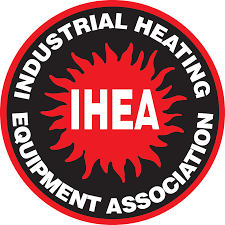IHEA July Executive Economic Report
Industrial Heating Equipment Association (IHEA) is a US based organization which does a very good job of tracking the US economy in general and the heating portion of manufacturing in particular.
“There is one positive aspect when it comes to a dramatic drop as experienced in March and April of this year. When one has fallen that far there is nowhere to go but up! Since then there has been a steady improvement in almost every category. This month there was progress in all but one measure and even this showed only a very slight decline from the month prior. The overall economy has been showing signs of resilience and that is certainly a good thing, but the fact remains that much of this progress is tenuous. The assumption all along was that there would be a significant bounce back once the restrictions on the economy were lifted and in June and July that assumption proved accurate.
The progress that has been made thus far has been contingent on several factors. The first is that many businesses have engaged in rebuilding their inventories in anticipation of an eventual economic recovery. The hope was that this rebound would come in May of this year or at least this summer. That has not been the case and now hopes lie in a rebound by the fourth quarter. The second major motivator for recovery has been the willingness of the consumer to return to old habits as far as consumption. This has been a mixed experience as there has been some return to those old habits but there have also been many new habits formed and these have all had their impact on business.
Of the twelve index readings tracked, all but one trended positively and in some cases the numbers registered this month were better than they have been in over a year. The only reading that did not trend positively was steel consumption and that reading was stable and looked very similar to the last few months. Of those that trend positively, the majority remain distant from the readings that dominated at the start of last year. The data is showing a solid recovery in many areas but there remains a long way to go. For example, capacity utilization staged a nice rebound from 65.1 to 68.6 but that is still a very long way from the bottom of normal at 80. Sales of new vehicles jumped back from the depths but is still very far from the levels at the start of the year.
The more interesting data was found in those categories that seemed to have fully recovered and even exceeded levels seen earlier this year and at the end of 2019. The New Orders Index from the Purchasing Managers’ Index was back to the 60s and that is a level that has not been seen in over a year. Given that the new orders sub-index is the forward looking part of the overall PMI, it bodes well for the recovery at the end of the year. There was also a nice jump in the transportation index and that also provides some confidence about the future. It also indicates there has been a significant change in everything from the traditional supply chain to the habits of consumers. The parcel delivery sector of transportation is booming but those sectors that are tied to exports and imports are struggling. The movement in the metals markets has been interesting as well. The hike in the prices of metal commodities such as copper or aluminum have more to do with the interest of investors than industrial demand. These commodities have started to regain their popularity as a hedge against future inflation.
The production indicators such as durable goods and factory orders have shown progress as business tries to rebuild inventory levels but there is ongoing concern regarding new demand. If the inventory levels get back to normal and there is no corresponding demand these levels will be a burden to the companies carrying them. The bottom line is that there is resilience in the economy despite the trials of the last few months. It now all depends on whether the pandemic necessitates a wider crackdown and a resumption of the conditions that collapsed the economy in the first place.”

